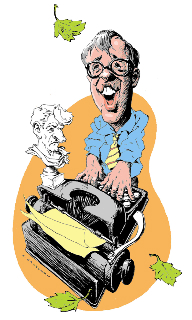THIS BEING THE SEASON OF SMOG IN the Los Angeles basin, the haze of uncertainty that descended upon the Dorothy Chandler Pavilion this past week seemed apt. Willem Wijnbergen, executive vice president and managing director of the Los Angeles Philharmonic, was departing after a mere 15 months in office.
Did he resign? Was he pushed? Neither? Both? From his native Amsterdam, where he is vacationing, Wijnbergen told the L.A. Times that his Los Angeles lawyer, Howard Rosen, had delivered to Barry Sanders, president of the Philharmonic Association, a letter pointing out problem areas in their relationship — areas that Wijnbergen has so far declined to identify. The letter, Wijnbergen claims, did not contain the word resignation as such, but noted the presence of difficulties that had the potential to activate a “termination with good reason” clause in his contract. The board, however, accepted the letter as a resignation — effective immediately.
“This is no dismissal,” Sanders stressed early last week. “We would very much like him to stay.” On KCRW’s Which Way L.A., Sanders assured the world that everything is in place and unchanged for a superb Hollywood Bowl season and further glories beyond. But his final words on that program may have told more than he intended: “We know how to execute.”
The wisdom in Philharmonic circles is that the controversial, visionary Wijnbergen, who arrived on the scene last year with a briefcase full of changes in the orchestra’s physiognomy — which involved many firings, many hirings, a flurry of job reshufflings, even at one point a plan (now deferred) to move the whole Philharmonic management out of its Music Center offices to a more distant vantage point — had come up against the resistance of a board famous for its fear of novelty on both the management and artistic side.
Discernible through the uncertainty was the sturdy figure of Ernest Fleischmann, Wijnbergen’s predecessor, whose 29-year tenure redefined the role — social as well as artistic — of symphony orchestras for all time. Insiders have for months advanced the theory that Fleischmann’s act would be hard — nay, impossible — to follow; now there’s proof: Wijnbergen has been done in by the impotence of not being Ernest. While it’s unlikely that Fleischmann, now pushing 75, might be lured back to his old job (currently in the hands of chief financial and administrative officer Gene Pasquarelli), he hasn’t exactly been invisible around the Philharmonic in the past year. (Interestingly, Fleischmann, Wijnbergen and conductor Esa-Pekka Salonen were all out of the country last week.)
Wijnbergen, an adept musical amateur but basically more businessman than impresario (with a dossier that included time as brand manager for Procter Gamble’s Rotterdam office), arrived here convinced that business — dealing with deficits, devising new marketing gadgetry, streamlining operations in both artistic and money regions — ranked first on the agenda. He came to the Philharmonic from a comparable position at Amsterdam’s legendary Royal Concertgebouw Orchestra, which his managerial skills had pulled out of red ink in the early ’90s. He was virtually unknown in the U.S., although Salonen had conducted Wijnbergen’s orchestra and had endorsed his coming to Los Angeles. (Unnamed sources with the Philharmonic indicated last week that Salonen’s enthusiasm toward Wijnbergen had noticeably cooled in recent months.) In any case, Wijnbergen arrived on the job with a winning smile and an obsession for change that was bound to trample many toes at the Music Center. It may well be that he acted upon some of them with undue haste — the precipitous firing of the popular and able Hollywood Bowl manager Anne Parsons mere weeks after his arrival, for one.
The intelligence among Philharmonic staffers after Wijnbergen’s announcement combined shock with a minimum of surprise; it seems apparent that a collision between the new managerial blood and the fuddy-duddy intractability of the board was bound to happen. The miracle of the equally strong-minded and innovative Fleischmann’s 29-year survival looms ever less understandable. Crusty and wily, monstrously ungifted as platform speaker, not above coddling favorites, Fleischmann still demonstrated the classic gifts for charming his way toward his great goals — gifts the indisputably able Wijnbergen simply lacked.
Even so, Wijnbergen’s impact on the orchestra, and its community, was considerable. The overall image is much improved — partly through his quick and easy overtures to civic leaders in many fields, and also thanks to his role in motivating the L. A. Times’ long overdue decision to give classical music more lines of newsprint than it had previously enjoyed.
Wijnbergen is due back in Los Angeles on July 9. He seems to hold out hope — or at least he says he does — that the differences can be worked out. Most Philharmonic watchers, however, are betting he won’t put in another appearance at the Music Center. If that’s the case, he, too, will be a hard act to follow.


